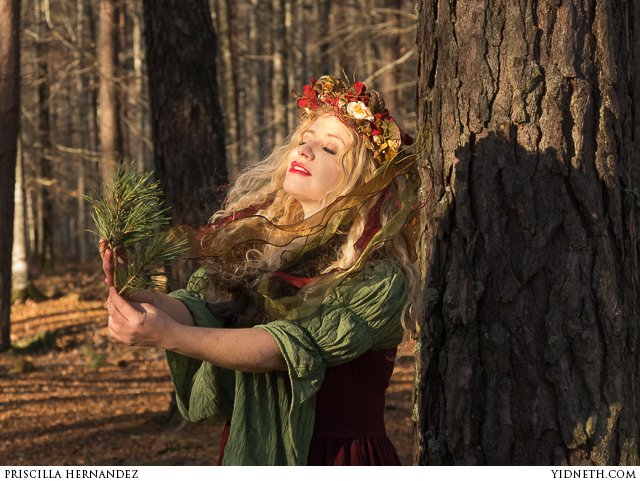-3.jpg)
As I told in my previous post some of the posts I will share in December are going to have a very Christmas or Yuletide (Winter) vibe. I am myself a December child as I was born mid December, so for me it’s a very special time of the year, a time of new resolutions.
I write this article to draft a glimpse of the background story behind this tradition of using “Evergreen” during the closing of the year, Winter or Yule. But also I take the chance to say how sad is that millions of trees are chopped just for the sake of this tradition. If you must use a real tree, please consider to buy it in a pot instead of chopped off, even deprived of light it might make it if you plant it again after the festivities are over.
There are always ways to do things with balance.
I understand that for some people this is a very important tradition and I respect… I only call for moderation… There will be always be debate as Faux plastic trees are a poor alternative and also rise another kind of environmental concern… so as I say there are pros and cons… still sharing just my personal approach and then moving on to the origins. I’m also aware of the jobs that it provides in rural areas but there is something very sad in a “clone forest” perfectly programmed to be consumed, used and thrown away.
As for me, trees belong to the woods (not farms), growing and living
.jpg)
That is why I always take a fallen branch from the forest floor or use a tiny faux tree as ornament. Most of live Christmas trees that are sold as objects have grown for over a decade just to be used and neglected after a handful of days. I also cover one particular sad XIX century fairytale “The Fir Tree” by Danish author Hans Christian Andersen (who wrote also The Little Mermaid) which actually contemplated this very thought almost two centuries ago and that broke my heart at a very tender age. I include a synopsis and a link to a full read of the tale (now public domain) at the end of the article. I want to say that this is my personal opinion, and I’m not trying to preach anything to the ones following this tradition but always a call to moderation, because as usual things are getting environmentally out of hand (even Amazon will sell live trees this year) and vast surfaces in protected rainforests being replaced by Christmas tree farms, which is just sad. It could be argued that fake trees in fact (most of them ) are made of plastic which are even worse for the environment… but still we can be recycle it many years or be creative and use other materials like paper or fallen foraged materials from the woods. Growing 10 years just to be adorned and then cut down or burnt after a few days is sad. There are some that can be replanted and come in pots, but people usually want the bigger more sumptuous one. More than 30 million trees are cut down and sold in USA alone each year. Oh but they plant trees right… yes but that land takes away from wild forests land with higher diversity… so yes, there are pros and cons. and again this is just my opinion and is not intended to generate debate, keep on reading because this article is not only about my personal opinion but about the origins, stories and curiosities behind this tradition.
The Origins of Christmas Trees
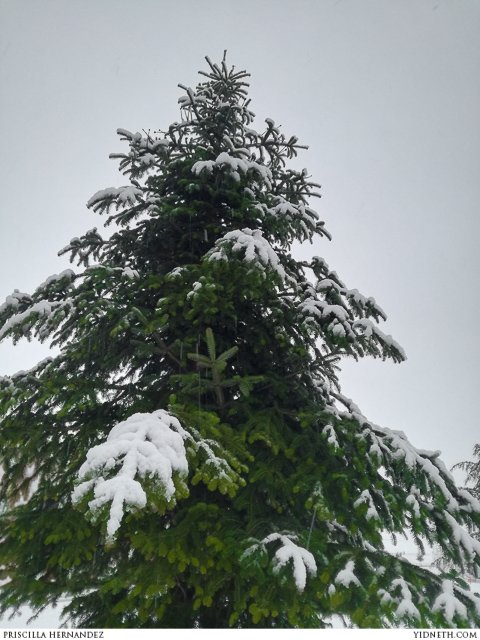.jpg)
The origins of of Christmas trees date to pre-Christian era, for thousands of years evergreen plants (mistletoe, holly) and trees (pine, spruce, fir) has been used during winter as “promise” of the life to come after the bleak winter, and thus keeping evergreen plants (including holly and mistletoe) is meant to brighten our spirits during the stark bare winter. They are symbols too of everlasting life.
Boughs of evergreen would adorn the doors of houses to keep away evil spirits.
It was considered in many cultures that the Sun God was weaker or ill
during Winter. Egyptians would use evergreen palm rushes. Old Vikings
also provided special powers to evergreen plants for the same reason so
did the Druids of Ancient Celts.
Evergreen plants were used by Romans in Saturnalia Festivals (17th -23rd of December), and also by countries in the far North of Europe who used Evergreen as a token of “hope” during the bleak Yule and usually included December and January. Nowadays Yule starts 21st of December (Winter’s Solstice) and last for 12 days… those are the 12 days of Christmas. There is no real evidence of Jesus being born the 25th of December though it felt sensible to adapt the already existing “Pagan Winter Feast” as after the Solstice days become longer and they could relate it with the light of God entering the World. But just to say date was picked as convenient and not as accurate
Christians later changed this meaning of “evergreen” to represent the everlasting love of god. And thus Yuletide became Christmastide.

Impressions of Yuletide season, the green and reds, and holy another evergreen used in Chirstmas that also date back to pre-Christian traditions.
First Christmas Trees as we know them
were originated in Lavonia (now Latvia and Estonia) and placed in the
Square for everyone to enjoy. First indoor trees are usually placed in
Germany.
Later on Martin Luther , 16th-century Protestant reformer Luther was
credited for starting to decorate the trees with “candles” to resemble
the trees against the starry sky. This was the origin of the Christmas
Tree lights (despite a very dangerous practise that was finally replaced
by safer electric lights in the XX century). If you are a
traditionalist and still use real candles on your tree, never leave them
unattended… custom was responsible of a great deal of unintended casualties though no electric light can replace the warm vibe of those vintage Christmas Trees that our ancestors remember.
The origin of tinsel and the story of the Christmas Spider
As for the famous tinsel , the word means spark and before being made of plastic it was extruded from real silver hammered into a thin foil and then cut into strips.
It is believed that the idea of tinsel came from the sparkling frosted
cobwebs. And thus in many European countries spiders are considered good
luck and are related with Christmas this way. There is even an
Ukrainian folk tale about the “Spider of Christmas Cobweb” that tells
the story of a very poor family that found their bare Christmas tree all
adorned by iridescent cobweb woven by the spiders during the night and
how they never felt poor again grateful for the gifts life had provided
them. That is why some ornaments are shaped as cobwebs, especially in
Ukraine where the legend is originated. I will talk more about this in
another post as I have a collection of frosted cobwebs I’ve made myself,
but meanwhile it’s not difficult to imagine how tinsel was inspired by it.
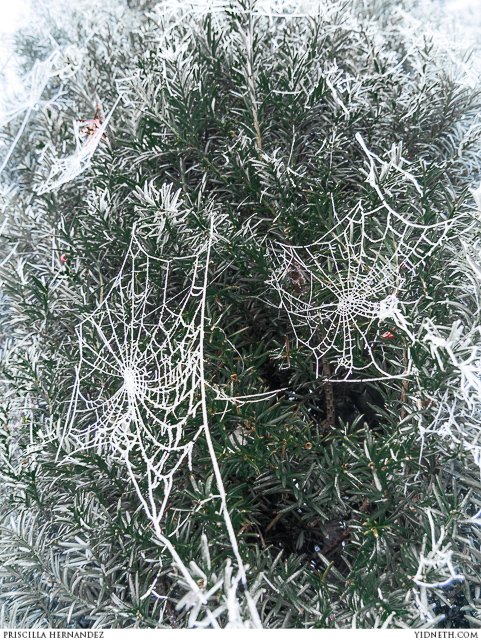
Frosted cobweb on fir tree around my neihbourhood some winters ago
Oh Christmas Tree: The Christmas Carol
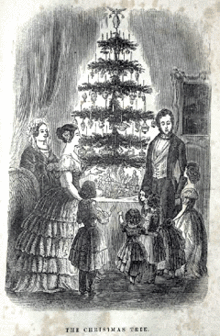
The Queen’s Christmas tree at Windsor Castle (Illustrated London News, 1848) Steel engraving, Public Domain, Link
“O Tannenbaum” (literally “The Fir Tree”) is a german traditional folk son which origin can be tracked back to the XVI century though was provided the modern lyrics by Ernst Anschütz in 1824. The song that now we know as “Oh Christmas Tree” was not related with Christmas but to the evergreen quality of the fir tree to represent the faithfulness in love. And thus “true” was replaced by “green” in the English translation as it became a Christmas song. There are many English variants. But I’ll include here an excerpt of the original.
O Tannenbaum, o Tannenbaum,
wie treu sind deine Blätter!
Du grünst nicht nur zur Sommerzeit,
Nein auch im Winter, wenn es schneit.
O Tannenbaum, o Tannenbaum,
wie treu sind deine Blätter!
O Christmas Tree, O Christmas Tree,
How steadfast are your branches!
Your boughs are green in summer’s clime
And through the snows of wintertime.
O Christmas Tree, O Christmas Tree,
How steadfast are your branches!
Hans Christian Andersen tale: The fir Tree (very sad fairytale, very real though)
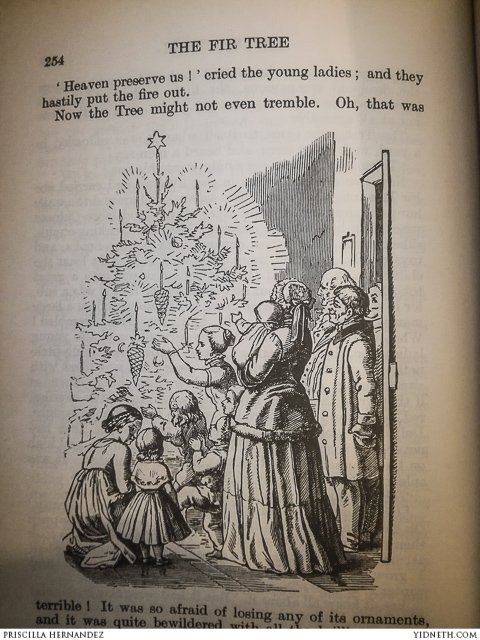.jpg)
Above an illustration of The Fir Tree in one of the Andersen compilations I own
For me one of the saddest and more pessimist fairy tales that Danish author Hand Christian Andersen ever wrote and one that as a child (as Andersen was the first book I ever owned) made me opt for a faux tree or just a fallen branch token. Childhood trauma about Christmas trees… 😉 But still a must-read.
The tale is about a fir tree anxiously looking to grow up, aspiring to grow tall, and it is told as if the tree has a will and awareness. And as sparrows chant of trees in warm rooms with decorations and being worshipped, the tree longs to be cut… until one day it happens and feels the delight of being admired with all the decorations then to be abandoned in a dark room.
That night many people gathered in the room around the little fir tree. They sang and told stories. They placed gifts at his feet. And the fir tree, trembling with joy, listened to the stories they told.
“I wonder what will happen tomorrow?” he thought. He longed for the next day to come.
The people returned the next day. This time they removed the popcorn and the candles and the dolls and the angels from the little fir tree’s limbs. Then they lifted him up in the air and carried him up a flight of steps, into a dark, airless room.
And there in the attic is left forsaken, withered in the darkness until one day it’s taken outside, and the fresh air reminds it of the forest, but then it’s chopped and burnt…
Did I mention this was a traumatic fairy tale for me as a child? This was likely the origin of my conviction. LOL You are warned… if you are curious it’s just a short read and as it’s Public Domain it’s available at Project Gutenberg Online Library at this link:
My Christmas Decorations
So here a snippet of my usual Christmas Decorations that will go up of course with Fufunchis. It’s just a small faux tree, something symbolic and humble.
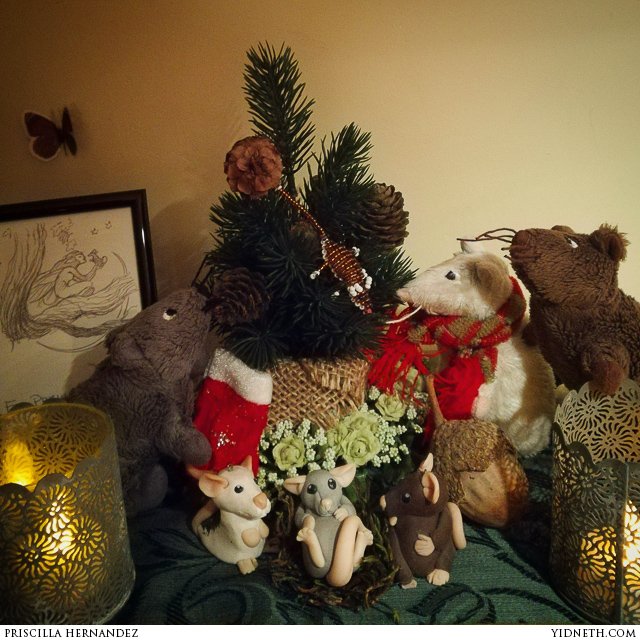.jpg)
Fufunchis have already decorated their Christmas tree
The Power of Christmas / Yule Spirit transcends our beliefs
-2.jpg)
I confess I’m not religious but
spiritual, and also I’m not pagan but I celebrate Yule, The Closing of
the Year. For me it represents the Wheel of the Year coming to an end,
also Winter’s solstice is the shortest day, but also the day light
starts to return, days will become longer as Winter reigns… such
contradiction and quandary… that the “dark season” is precisely the bringer of light.
And wether you are religious or not, whatever your beliefs are, this is
a season to reconsider what we’ve done during the year, to build new
resolutions and determinations… The year closes and it’s always a time
to think thoroughly of what it has yielded… To start afresh with new
dreams and resolutions, to fix whatever we did wrong… It’s a time of
new hopes and new chances… As weather turns cold outside and we spend
more time indoors it is a time to organize, to enjoy our family and
friends along with a hot mug of chocolate. It provides a reason to
gather, to go home, to hug our beloved, to be giving…
So if you ask me if I believe in Christmas Spirit, as an excuse to bring us together and remember the power of kindness, yes I believe in its power.
-6.jpg)
I wrote in my own song Grow
As seasons flow,
once more it all
turns bare and cold
but save green in your heart
And that’s all the green I need in Winter
-7.jpg)
So let me think of Christmas trees like this
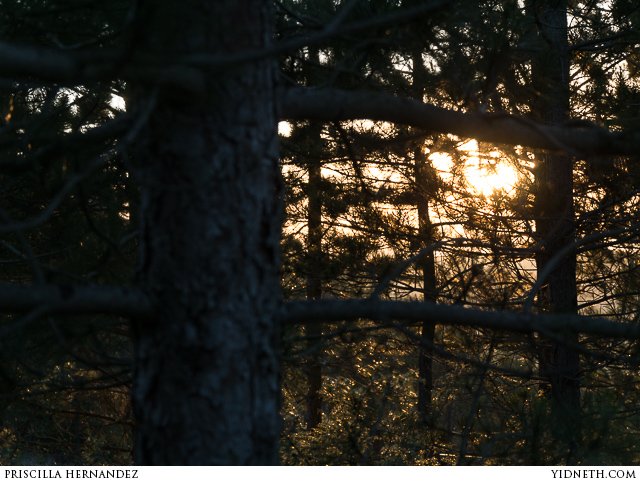
>
All pictures taken by me or in collaboration with Héctor Corcín.
PD. My collar is faux fur. I don’t wear real fur.

